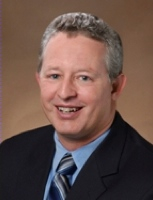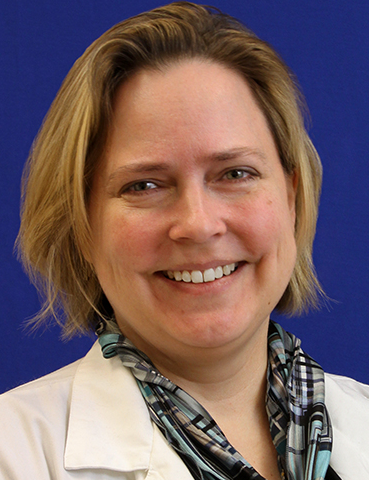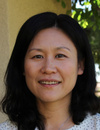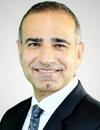08:00 | Conference Registration, Materials Pick-Up, Morning Coffee and Pastries |
|
Session Title: Conference Opening Session -- Emerging Themes in Circulating Biomarkers and Exosomes/EVs |
| |
|
Venue: Coronado Ballroom C |
| |
08:30 |  | Conference Chair Welcome and Introduction to the Conference
Michael Graner, Professor, Dept of Neurosurgery, University of Colorado Anschutz School of Medicine, United States of America
|
|
08:45 |  | Keynote Presentation Liquid Biopsies Using EVs: Promise and Peril on the Frontiers of a New Field
Jennifer Jones, NIH Stadtman Investigator, Head of Transnational Nanobiology, Laboratory of Pathology, Center for Cancer Research, National Cancer Institute, United States of America
|
|
09:15 |  | Keynote Presentation New Flow-Based Technologies for the High-Sensitivity and High-Resolution Analysis of CTCs and Exosomes
Daniel Chiu, A. Bruce Montgomery Professor of Chemistry, University of Washington, United States of America
This presentation will describe two flow-based technologies we developed
for the analysis of single rare cells and individual extracellular
vesicles. The first flow platform is a rare-cell isolation instrument we
call eDAR (ensemble decision aliquot ranking), which is capable of
operating in a rapid sequential sorting mode for isolating single rare
cells with exceptionally high sensitivity and purity. The second flow
instrument is a single-vesicle sorter, capable of high-sensitivity
analysis of individual extracellular vesicles. I will outline the
workings of these new tools, describe their performance, and discuss the
clinical questions we are addressing with these next-generation
technologies. |
|
09:45 |  | Keynote Presentation Circulating Tumor Cells Inform Mechanism of Breast Cancer Metastasis
Min Yu, Assistant Professor, University of Southern California, United States of America
Circulating tumor cells (CTCs) are expected to contain
metastasis-initiating cells that can shed light on the mechanisms of
cancer metastasis. However, due to limited patient-derived material, the
metastatic capability of CTCs has yet to be proved. Using our recently
established patient-derived CTC lines, we found that different patient
CTC lines demonstrated distinct metastatic tissue tropisms in
immunodeficient mice and identified associated pathways to specific
organs via RNA-seq and ATAC-seq analysis. |
|
10:15 | Morning Coffee Break and Networking in the Exhibit Hall |
10:45 | Biofluid Biomarkers for the Brain
Kendall Van Keuren-Jensen, Professor and Deputy Director, Translational Genomics Research Institute, United States of America
We will describe some of our efforts in using exRNAs as diagnostics for central nervous system injury and disease. |
11:15 |  | Keynote Presentation Deciphering the Vesicle Code: Making Sense of EV Heterogeneity
John Nolan, CEO, Cellarcus Biosciences, Inc., United States of America
Cells release extracellular vesicles (EVs) that can carry molecular
cargo, including lipids, proteins, and nucleic acids, to nearby or
distant cells and affect their function. Understanding the mechanisms of
EV biogenesis, uptake and transport has the potential to lead to new
biomarkers, diagnostics, and therapeutics. A limit to realizing this
potential is the ability to measure individual EVs and their cargo
quantitatively and reproducibly. Conventional bulk biochemical analyses,
which report only the total amount of cargo in an EV preparation,
cannot effectively assess compositional heterogeneity. Single EV
analysis methods are required, but conventional tools are challenged to
accurately measure small, dim particles. We have developed a vesicle
flow cytometry (vFC) method that can detect and size individual EVs to
70 nm, and measure surface cargo to ~25 molecules/EV. vFC allows the
identification and characterization of vesicle sub-types within
heterogeneous populations in culture supernatants of biofluids. Single
EV analysis using vFC reveals striking differences in the expression of
canonical vesicle cargo such as tetraspanins, as well as other surface
markers including integrins, tumor markers, and carbohydrates on EVs in
biofluids and even EVs collected from cultured cell lines. vFC-based
single EV immunophenotyping will enable us to understand the origins and
functions of EVs in much the same way cell-based immunophenotyping has
enabled a detailed understanding of the immune system, and lead to a new
generation of EV-based biomarkers, diagnostics, and therapeutics. |
|
11:45 |  | Keynote Presentation An Exosome-based Drug Delivery Platform Derived From an Immortalized Human Neural Stem Cell (hNSC) Line
Randolph Corteling, Head of Research, ReNeuron Ltd., United Kingdom
To ensure the scale required for clinical research and commercialization
producer cell immortalization and clonal isolation is a practical
strategy to produce consistent, functionally bioactive exosomes for use
as therapeutic agents. Immortalization ensures production stability and
reduces the need for equivalence testing.
CTX0E03 is a
conditionally immortalised human neural stem cell line that has been
manufactured to clinical-grade (GMP) standards, using a 3-tier banking
strategy and is currently in Phase IIb clinical evaluation for
disability after stroke. Using the conditioned media produced during GMP
manufacture, we have shown that CTX0E03 is an abundant producer of
exosomes that can be readily isolated and purified at scale. The CTX
cell line can also be rapidly and efficiently modified to direct the
expression of a variety of cargoes within the secreted EV population,
whilst maintaining the key immortalised stem cell characteristics of the
parental cell line. The natural tissue tropism of CTX-derived exosomes
can then be exploited to deliver loaded cargoes to target cells. |
|
12:15 |  | Keynote Presentation Optimizing Dendritic Cell-Derived Exosomes For Cancer Immunotherapy
Susanne Gabrielsson, Professor, Division of Immunology and Allergy, Department of Medicine Solna, Karolinska Institutet, Sweden
Peptide loaded exosomes are promising cancer treatment vehicles, however, low T cell responses in human clinical trials indicate a need to further understand exosome-induced immunity. We previously demonstrated that antigen-loaded exosomes carry whole protein antigens and require B cells for induction of antigen-specific T cells. I will discuss our latest data where we investigated the need for different immune related molecules on exosomes to induce T cell responses and tumor rejection in the B16 mouse melanoma model. Our data demonstrate ways to increase the feasibility of exosome-based therapeutic approaches in cancer. |
|
12:45 | Networking Lunch in the Exhibit Hall, Exhibits and Poster Viewing |
|
Session Title: Luncheon Technology Spotlight Sponsored by Clara Biotech | Session Sponsors |
| |
13:15 | Luncheon Technology Spotlight Presentation: Advancements in Exosome Isolation: Impacts on Research and Therapeutic Development
Jim West, CEO, Clara Biotech, United States of America
Mei He, Assistant Professor, University of Kansas and Chief Science Officer, Clara Biotech, United States of America
Don’t miss this informative lunch session!
The newest
technologies laying the groundwork for future exosome research and
commercialization will be discussed, highlighting advancements that will
have a far-reaching impact on this burgeoning space.
Exosome
isolation, purification, yield and viability are critical to research,
biomarker identification and therapeutic development. As the industry
learns more, being able to focus on specific exosome subtypes is
becoming increasingly important to this growing field.
This
seminar will review current and future exosome isolation technologies
and platforms, while also discussing their respective impacts on the
molecular components of exosomes.
*** Every attendee will get an exclusive conference gift for attending this seminar *** |
|
Session Title: Exosomes and Extracellular Vesicles (EVs) -- Research, Biomarkers, Delivery and Therapeutics Arenas | Session Sponsors |
| Session Chair: Behzad Mahdavi, Vice President of Strategic Innovation & Alliances, Lonza, United States of America |
| |
|
Venue: Coronado Ballroom C |
| |
14:00 |  | Keynote Presentation Basic and Applied Biology of Exosomes for Diagnosis and Treatment of Cancer
Raghu Kalluri, Professor and Chairman, Department of Cancer Biology, University of Texas MD Anderson Cancer Center, United States of America
|
|
14:30 |  | Keynote Presentation Plasma Extracellular Vesicle Sub-fractions as Biomarker Source For Cardiovascular Disease
Dominique PV de Kleijn, Professor Experimental Vascular Surgery, Professor Netherlands Heart Institute, University Medical Center Utrecht, The Netherlands, Netherlands
Cardiovascular Disease (CVD) is with the cardiovascular events of Ischemic Heart Disease and Stroke, the number 1 and 2 cause of death in the world and expect to increase especially in Asia. Ischemic heart disease (IHD) comprises 3 entities: stable coronary artery disease (SCAD), unstable angina (UA) and myocardial infarction (MI). Because IHD is associated with an increased risk of adverse clinical events such as heart failure and death, early recognition of IHD is of utmost importance. However, to diagnosis SCAD is challenging, as many patients present with atypical symptoms. Troponins are the main diagnostic tool for detection of MI. Blood biomarkers for SCAD (typically causing stable angina) and UA, however, are not available. These diagnoses frequently require hospital visits/admissions for time-consuming and costly (non)invasive tests. We use plasma extracellular vesicle protein content of vesicles from plasma sub-fractions as an accurate source for early diagnosis of SCAD. This plasma sub-fraction technology is also used for prognosis of a second MI or stroke to identify the high risk patient that can be treated with more intensive and often more costly medication. |
|
15:00 |  | Keynote Presentation Extracellular Vesicles in Cancer Progression
Lucia Languino, Professor of Cancer Biology, Thomas Jefferson University, United States of America
A variety of studies has shown the role of cancer cell-derived extracellular vesicles (EVs) in tumor progression. Our and others’ studies have also demonstrated that cancer cell-derived small EVs (sEVs) target multiple recipient cells, such as cancer cells as well as monocytes in the tumor microenvironment (TME). We have specifically shown that prostate cancer cell-derived sEVs are taken up by cancer cells and monocytes and they are equally efficient in modulating the functions of these cells. This is expected since tumor growth is supported by all components of the TME and requires monocyte differentiation into a M2 pro-tumorigenic phenotype. We now demonstrate that the alphaV integrins are up-regulated in circulating prostate cancer sEVs, and play a major role in the sEV functions described above. We demonstrate that de novo alphaV integrins’ expression in TME cells is not caused by increased mRNA levels but rather by sEV-mediated protein transfer. We have used CRISPR-Cas9 technology and current approaches recommended by MISEV2018 to isolate sEVs lacking alphaVbeta3 or alphaVbeta6 integrins. We specifically show that in vivo and in vitro sEVs containing these integrins are required to reprogram cancer cells toward a very aggressive neuroendocrine phenotype, or to increase pro-angiogenic activities of microvascular endothelium. The ability of the alphaVbeta3 and alphaVbeta6 integrins to affect a specific target cell via sEVs appears to be mediated by their unique beta subunit and by activation of specific signaling pathways. Overall, our recent investigations show that the expression of the alphaV integrins in sEVs generates vesicles that have pro-tumorigenic activities. Thus, we conclude that inhibition of these integrins and their downstream effectors might offer novel therapeutic strategies in prostate cancer. We also conclude that alphaV integrins in prostate cancer patient sEVs may be a clinically useful and non-invasive biomarker for prostate cancer progression. |
|
15:30 | Afternoon Coffee and Tea Break and Networking |
16:00 |  | Keynote Presentation Development of Therapeutic Exosomes: Principles and Applications
Chulhee Choi, Professor and Chair, BioMedical Imaging Center, Korea Advanced Institute of Science and Technology (KAIST), President, ILIAS Biologics Incorporated, Korea South
Our group has recently developed an opto-genetically engineered exosome system, named "exosomes for protein loading via optically reversible protein–protein interaction” (EXPLOR) that can deliver soluble proteins into the cytosol of target cells via controlled, reversible protein–protein interactions (PPI). By integrating a reversible PPI module controlled by specific wavelength of light with the endogenous process of exosome biogenesis, cargo proteins of our interest can be loaded into newly generated exosomes. Protein-loaded exosomes were shown to significantly increase intracellular levels of cargo proteins and their function in recipient cells in both a time- and dose-dependent manner. In this presentation, I will introduce the basic principles of EXPLOR technology and follow-up studies for therapeutic applications. |
|
16:30 |  | Keynote Presentation Extracellular Vesicles as Reprogramming Reagents for induced Tissue Regeneration (iTR)
Dana Larocca, VP Discovery Research, AgeX Therapeutics, United States of America
The global demographic shift toward an older population has created an urgent unmet medical need for effective therapeutics to treat chronic diseases of aging. Our somatic restriction model views aging as a progressive loss of robust replicative and regenerative potential, initially observed in the developing embryo, that leads to the eventual loss of tissue homeostasis associated with aging. We are currently assessing the ability of natural and engineered EVs to restore aging adult cells to a younger more regenerative state. Accordingly, we hypothesized that EVs from young highly regenerative embryonic progenitor cell lines could potentially act as reprogramming reagents to induce regeneration in aging adult cells and tissues. Toward this end, we have been mining our PureStem library of over 200 highly scalable and clonally pure embryonic progenitor cell lines to identify cellular sources of EVs capable of induced Tissue Regeneration (iTR). Using angiogenesis as a model system of vascular regeneration, we identified embryonic progenitor cell lines that produce EVs capable of stimulating adult endothelial cell migration and tube formation with increased potency compared to EVs from adult cell lines. We are using comparative transcriptomic analysis of our PureStem library to identify additional candidate cell lines that produce angiogenic EVs. In addition, we identified miRNA cargo associated with increased angiogenic activity that we are currently loading into native exosomes to determine whether they can enhance therapeutic potency. Our data indicate the potential of embryonic progenitor cell lines as a source of natural and engineered EVs for treating cardiovascular disease as well as other degenerative diseases of aging. |
|
17:00 |  | Keynote Presentation Therapeutic Applications of Extracellular Vesicles for Extending Healthspan
Paul Robbins, Professor, Department of Biochemistry, Molecular Biology, and Biophysics, and the Institute on the Biology of Aging and Metabolism, University of Minnesota Medical School, United States of America
A universal characteristic of aging is loss of tissue regenerative potential due to stem cell dysfunction, contributing to the dramatic increase in the risk of morbidity and mortality. We have used both naturally-aged mice and mouse models of accelerated aging to demonstrate that transplantation of young, functional adult stem cells results in an extension of healthspan. In addition, we have demonstrated that stem cell-derived EVs are a key mediator for conferring the observed extension of healthspan by young stem cells. Progress towards developing clinically-relevant approaches using adult stem cell-derived extracellular vesicles to treat age-related pathologies and extend healthspan will be presented.
|
|
17:30 |  Isolation and Purification of Extracellular Vesicles: Current Directions Isolation and Purification of Extracellular Vesicles: Current Directions
William Whitford, Strategic Solutions Leader, GE Healthcare Life Sciences
When isolating vesicles for therapeutic applications, it’s advantageous to have a very good understanding of diverse individual characteristics of the target subpopulation. There are many reasons for this, including that the three major groups of EVs have been described (and even defined) according to their mechanism of generation: macrovesicles, apoptotic bodies and exosomes. While the latter are often assumed to represent a homogenous population, significant work on exosomes has revealed distinct subpopulations of differing properties. These properties include physical behaviors in manipulation, and such molecular composition as proteomic and nucleic acid repertoires. Significantly, these subpopulations have also been reported to mediate differential effects upon recipient cells and tissues. All-in-all, it has been reported that different populations of exosome types may be generated from differing cell and tissue types, culture techniques, isolation strategies, and even the scale of an identified isolation technology.
Furthermore, it has been reported that no individual isolation technique will exquisitely separate any subpopulation from all others. This is because each characteristic is presented by more than one sub-type. For example, separation based on size solely cannot isolate any of the three major EV groups, since they significantly overlap in size. For similar reasons no single technology can even isolate any particular sub-type of exosomes.
Finally, the impurities to be removed in the production of EV-based pharmaceutical ingredients are primarily free proteins and host cell DNA– but virus and endotoxin must also be considered. Many isolation and purification process have been described, and the study points to the value of including some sort of specific capture step. Approaches to this type of purification will be reviewed.
|
18:00 |  | Keynote Presentation Exosome, The Next Small Thing: A Winning Strategy To Lead Its Manufacturing and Characterization
Behzad Mahdavi, Vice President of Strategic Innovation & Alliances, Lonza, United States of America
- Importance of Exosomes in Precision Medicine and Targeted Delivery
- How expertise and assets in cell manufacturing are essential for Exosome manufacturing
- Leverage the exosome-based liquid biopsy, characterization and profiling in therapeutic development manufacturing
- Cell Therapy Manufacturing + Exosomes Based Liquid Biopsy = A winning combination to lead Exosomes Manufacturing
|
|
18:30 | Networking Reception with Beer, Wine and a Buffet Dinner in the Exhibit Hall |
19:30 | Close of Day 1 of the Conference |
19:40 | Exosomes-EV Training Course in Ballroom A&B [Separate Registration Required to Attend this Training Course] |
























